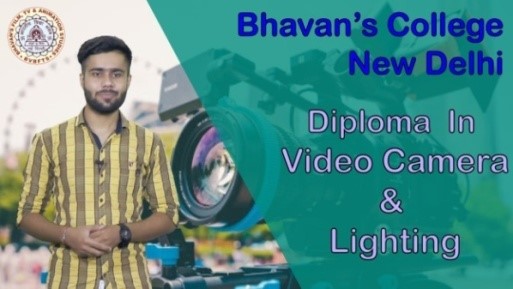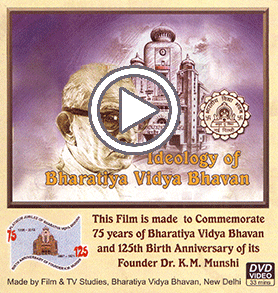Diploma in Photography & Video Camera (CMR) |
The Camera person is an eye of the Film Director. He is the most crucial component in the production team after the Director. With the Video Camera we can enter into most of the no entry zones, come close to celebrities often visit new places, travel around world at producer's cost and enjoy maximum adventure in life. Training starts with inputs on photography, Indoor & outdoor shooting practice and exposure to different professional Video Camera. Working with creative lighting is integral part of the course. Students develop their knowledge and skill, step by step while working on different Projects and Assignments.
Scope: |
You can work as Cameraman with any TV News Channel and Production House. Can work as a Freelance Cameraman or can start business of Videography with own Video Camera. |
Eligibility: |
12th Pass |
Timing: |
11.00 am to 2.00 pm. 6 days in a week. 3 days theory and 3 days practical & project. Full time involvement is required for assignments & projects. |
Duration: |
One academic year |
Note: |
Students of CMR are advised to join Add-on Course on Computer Application. Today every camera is Digital and camera person should know how to create a Rough Cut to speedy delivery of News. With this additional training course Cameraman will become 100% perfect to get job as early as possible. |
Watch the video below for more information.
Cameraman can get maximum job satisfaction. Good Cameraman can earn around Rs. 20000/- (Twenty Thousand) per day. This is a best career after 12th. Watch this video and understand how you can grow to that height step by step. Duration: 4 mins |
 |
Examination Pattern
Group A – Internal Examinations
Programme is divided into two semesters, and
there will be an examination at the end of each semester. Also
there will be Evaluation Task at the end of every month as a one
paper covering all subjects and topics of theory and practical
covered during that month of study. Marks of these internal
examinations will be notified on final marksheet.
Internal examinations as Evaluation Task (E.T.) and assignments will be held at the end of August, September, October, November, January, February and March.
Students must appear and pass in minimum 5
E.T. and minimum 5 assignments.
Each evaluation task (E.T.) of 50 marks X 5 papers |
= |
250 marks |
Each assignment of 50 marks X 5 assignments |
= |
250 marks |
Total (Group A) |
= |
500 marks |
Group B – Final Examinations
Paper I to Paper V, towards end of 1st Semester.
Paper VI to Paper VIII, towards end of 2nd Semester
Paper I |
Fundamentals of Photography |
50 marks |
Paper II |
Digital Photography (Tools of Photography) |
50 marks |
Paper III |
Video Camera and Shooting Technique |
50 marks |
Paper IV |
TV Direction and Production Technique |
50 marks |
Paper V |
Life Managment |
50 marks |
Paper VI |
Commercial Photography & Videography |
50 marks |
Paper VII |
Computer Application for Photography & Videography |
50 marks |
Paper VIII |
Business of Photography & Videography |
50 marks |
Each paper of 50 marks X 8 papers = |
400 marks |
|
|
Total (Group B) = |
400 marks |
|
Note: To qualify, student must pass all papers.
Group C – Other Evaluations
1. |
Participation in Practicals & Projects during 1st Semester |
100 marks |
2. |
Participation in Practicals & Projects during 2nd Semester |
100 marks |
3. |
Practical Examination in the month of December |
50 marks |
4. |
Practical Examination in the month of April |
50 marks |
5. |
Skill Test for 1st Semester in December |
50 marks |
6. |
Skill Test for 2nd Semester in March |
50 marks |
7. |
Internal Assessment as per attendance, general behaviour, sincerity in class work, homework, submission etc. |
100 marks |
Total (Group C) = |
500 marks |
|
Group A + Group B + Group C = |
(Total) |
|
To qualify for Diploma student must secure 35% marks in individual subject and 40% aggregate. He/She must attend 80% of the theory and practical classes. And submission of all assignments are compulsory.

















